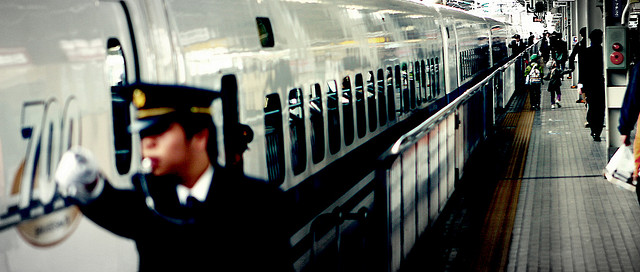Backers of a long-dreamed-of high-speed rail connection between Baltimore and Washington are claiming a massive new investment to help make it happen — $5 billion from the Japanese government, the Baltimore Sun reports.
It’s not an entirely magnanimous gesture, however.
The hope is that, ultimately, American officials will tap a Japanese company to build and operate the railway, which could complete in 15 minutes a trip that takes the fastest Amtrak train 40.
From the Sun report:
Such trains are capable of extreme speeds, thanks to their frictionless, magnetically-controlled motion above their tracks. The technology has been approved in Japan and is to be rolled out next month on an initial stretch of track that planners hope will eventually connect Tokyo, Nagoya and Osaka.
In addition to the $5 billion commitment from the public Japan Bank for International Cooperation, the private Central Japan Railway Co. has agreed to waive any licensing fees for use of its maglev technology, wrote attorneys for the Annapolis-based Baltimore Washington Rapid Rail LLC.
The Central Japan Railway Company, or JR Central, operates the Tōkaidō Shinkansen line, which covers just over 320 miles in as little as 2 1/2 hours. JR Central also supports advocacy company The Northeast Maglev as part of a larger effort to sign business abroad.
A Baltimore-Washington line, part of a larger idea to connect the entire Northeast Corridor, could alone cost upwards of $10 billion, according to the Sun report. Maglev lines are far more expensive than traditional high-speed rail.
But here’s where it gets complicated: under state law that passed the General Assembly in 2004, Maryland officials can’t spend any funds to study or build high-speed rail, and may not enter into an agreement to have a high-speed rail line built unless the General Assembly specifically authorizes such a project.
Currently, Baltimore and Washington are connected by Amtrak and the Maryland Transit Administration’s Penn and Camden MARC lines, along with commuter buses and the Washington Area Metropolitan Transit Authority’s B30 bus between BWI Airport and Greenbelt.







